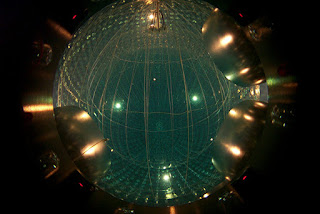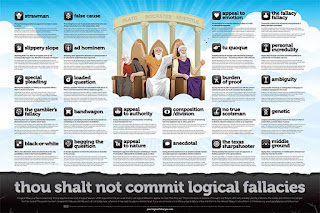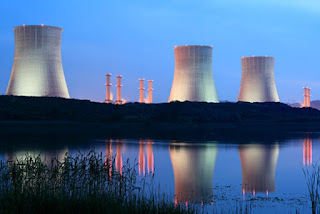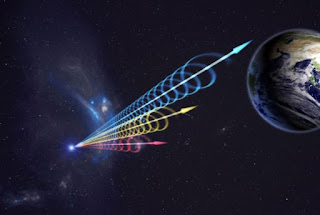
“I’m so sorry, honey. I have been neglecting you for work.”
The quiet bustle of the restaurant filled the air. Murmuring lovers leaned closely and whispered to each other of their undying affections over warm bread and expensive wines. Richard Refuerzo was such a man.
He was trying to rekindle the relationship with his estranged wife, Evangeline, who had made, in her estimation the wise decision of leaving this crazed dreamer — this mad scientist, dedicated solely to his work — to his work.
She looks around the restaurant. It was a new place, beautiful understated decor, beautiful wait staff and its ratings were off the chart. On the way over she had checked her IRIS to discover it was a Zagat-favored and three star restaurant. Tonight he was sparing no expense.
It had not been easy. They were so in love once. A decade ago, a lifetime ago, college had been very good to both of them. Students of biology, they were both working in a doctoral program at MIT; plant studies, recombination of genes to create new plants, hardier, capable of surviving harsher environments, able to live on less pure or even salt water.
He was the most promising of those students she thought to herself as he continued his blandishments of returning to the old days, the old ways, the passion; the love they had set their world and their lab on fire, more than once.
Literally. A moment of passion distracted them and while they were… busy, a small lab caught on fire and they were forced out in the sprinkler downpour. With their clothes in the burning lab, their affair was exposed as they were forced to leave the building wearing little more than their dignity and his most successful candidate for a new flower proto-type, the sterling. It didn’t matter, they were so young and in love. They ran home streaking through the campus, to madcap laughing through the night.
Those were good old days. They didn’t last.
Evangeline tried to focus her attention on what he was saying but she had heard these apologies before. She was sure nothing had changed for him. But, she had to admit, he looked good.
That haggard look, once so common for him; unshaven, unkempt, was gone. He seemed at ease, peaceful. This was the man I fell in love with, not that other crazy pendejo he became while he was doing, what he called his life’s work.
“Evangeline, are you listening?”
No. “Yes.” A pause. “No. I wasn’t. This is all so predictable. You bring me to a nice restaurant, you promise you’re going to change. I believe you, we fuck, then you go back to work neglect me for six months and I get tired of that, move out and go home to my condo. This will be the third time. I am tired, Richard. I think I am finally able to move on.”
Richard looked at her. Stared deeply into her eyes. “I finished it.”
Oh no, not again.
“Before you give me that look, hear me out. I really finished it. I corrected the last design flaws and this time, it is perfect. I can show you.”
“Right now?”
“Right now.”
Richard, looks over at the maitre d who had been coordinating the delicate dance of waiters, tables and clients like a conductor directs an orchestra. “Francis?”
“Right away, Mr. Refuerzo.”
Francis waves his hands and three of the young waiters appear and disappear into the back of the restaurant. When they return, they are carrying a large ornate vase filled with water, a box of sea salt, and a towel with fourteen long-stem roses. Each was a variety of colors, with the central flowers being silver-grey.
“Despite their colors they are all variations on my original sterling. I can make them any color I choose. But that is just the tip of the iceberg.” Richard directs the young men to place the large vase onto the floor and takes the sea salt from Francis. He takes a cup and scoops some of the water from the wide mouthed vase and drinks it.
“Ordinary water. Take a sip for me.” Evangeline complied, hoping to be done with the charade before everyone in the restaurant began looking.
“Ordinary sea salt, complete with a variety of flavorful minerals.” Francis looked at Richard as if to say, this wasn’t any ordinary sea salt but wisely said nothing. The old Richard hated interruptions in his demonstrations. This new Richard is something else. He is smiling. Confident. Evangeline is drawn to his movements, despite her reservations.
Richard pours the entire box of sea salt into the vase. Francis winced and nearly fainted; those were rare Italian sea salt dispensed as if it were common dirt.
He stirs the water in the vase until the salt is completely dissolved. He tasted the water with a flourish worthy of a magician. His sour face the indication something was amiss. He let Evangeline sip as well to confirm what he himself had already indicated. The water was now extremely salty.
He unwrapped the sterlings and exposes a delicate root structure at their base. Each was somehow grown as an individual flower, not part of a rosebush, or as a graft. These were genetic constructs.
He places each of the roses into the water, lovingly, with a passion he once reserved for her. He caresses each rose, making plenty of room for the root structures. She watched Richard as he whispered to each rose before putting it in with the others.
Evangeline found herself strangely aroused by his treatment of the roses and wondered if the supposed success of his project had change him in some way. “Now we are going to leave them in the water for just over five minutes. During that time, Evangeline, I want to ask you a question.”
“I know we have had some difficult times and while we have been apart, I have thought of nothing but you. This last two years without you make me realize I never want to be without you again. Will you exchange vows with me again?”
As Richard said this, the Sterlings, closed until now, opened up with rich and magnificent blooms. The center flower, the silver one, opened its petals and produced a silver and white ring. Richard gently removed the ring, thanking the flower and placed it on Evangaline’s finger.
It was a perfect fit. Richard took his glass and dipped it in the vase, filling it to the brim. He drank it completely and offered Evangeline a glass. Filled with the enthusiasm of the moment, she drank it, marveling at the purity and the complete removal of any mineral content whatsoever. Even the minerals in the water were gone and the water was now pH balanced to boot.
“How long do they live? What is their threshold for absorption, how do they process the minerals?” Evangeline’s mind was racing. He had done it. The process was quick, efficient and able to be controlled to the point he could have the flowers make a goddamn ring composed of all of the minerals. She licked the ring and was greeted with the concentrated taste of salt and metal.
“Save all of the questions for after dinner. You never answered my question. Will you remarry me. We will never want for anything, the patents alone on this process will make us rich beyond our wildest dreams of avarice.” Richard grabbed her up in his arms and spun her around. Evangeline tensed, for only a split second and then let herself go.
This man was happy. He was the man she fell in love with. Ebullient, energetic, alive again in a way she hadn’t seen in so long. He was the first man she ever loved, and wanted to love him again.
“Yes, you beautiful bastard, yes, I will marry you again. But this is the last time.”
“We won’t ever have to do this again. I promise.”
Dinner was extraordinary. The food was splendid. Richard was a new man and Evangeline found herself in love with him again.
They even made time for a quickie. Everyone pretended not to notice when they returned to their seats. Everyone, except the Sterlings.
Diners were so enraptured with each other, they failed to watch the imperceptibly slow movements of the Sterlings. Their stems began to intertwine, tightly wrapping each other in a fierce embrace.
The Sterlings noticed everything.
They extruded thorns made of salt and minerals. They considered the threat of Evangeline. They were of a cool and patient intelligence. They could wait. Plants never hurry. All things yield to them in time, even stone.
The Maker belonged to them and them alone.
Sterlings © Thaddeus Howze 2014, All Rights Reserved










